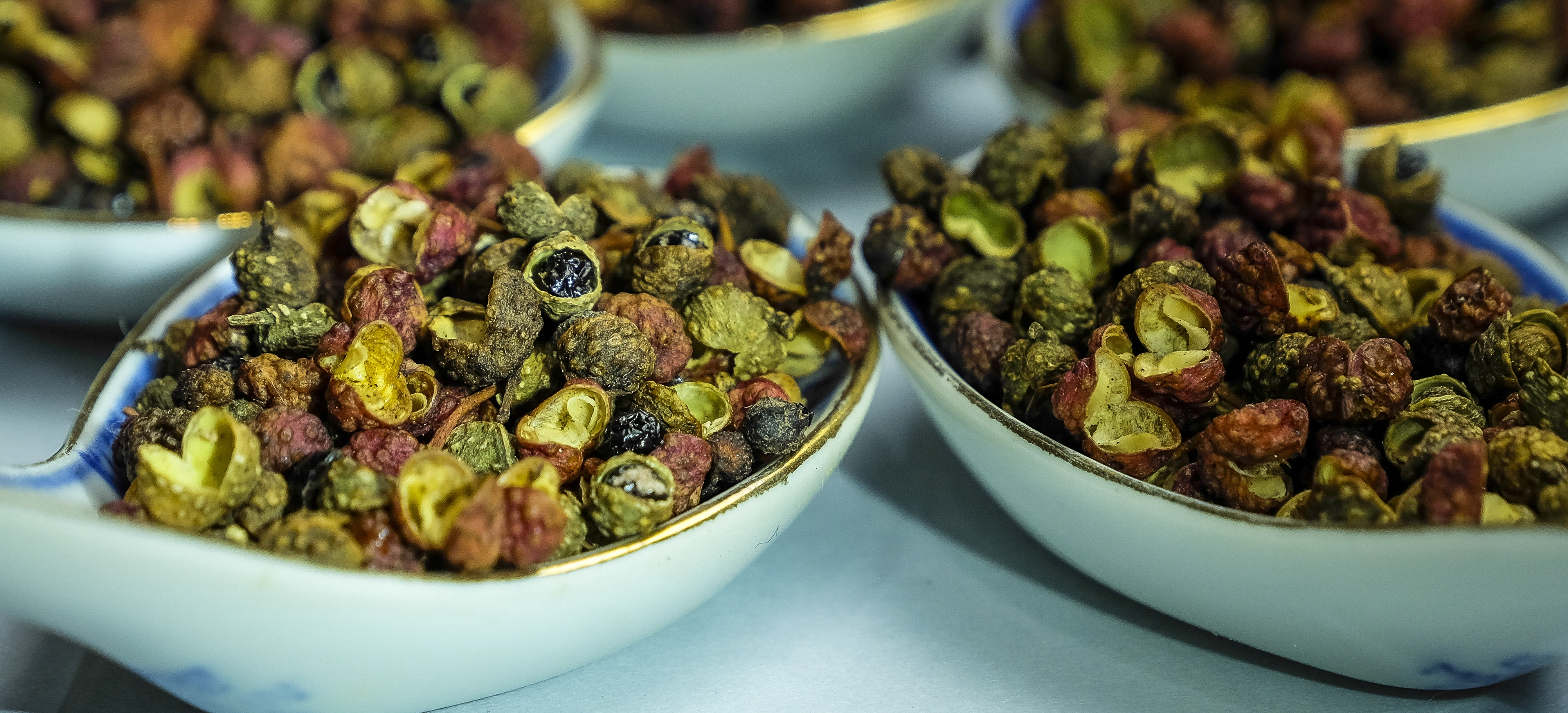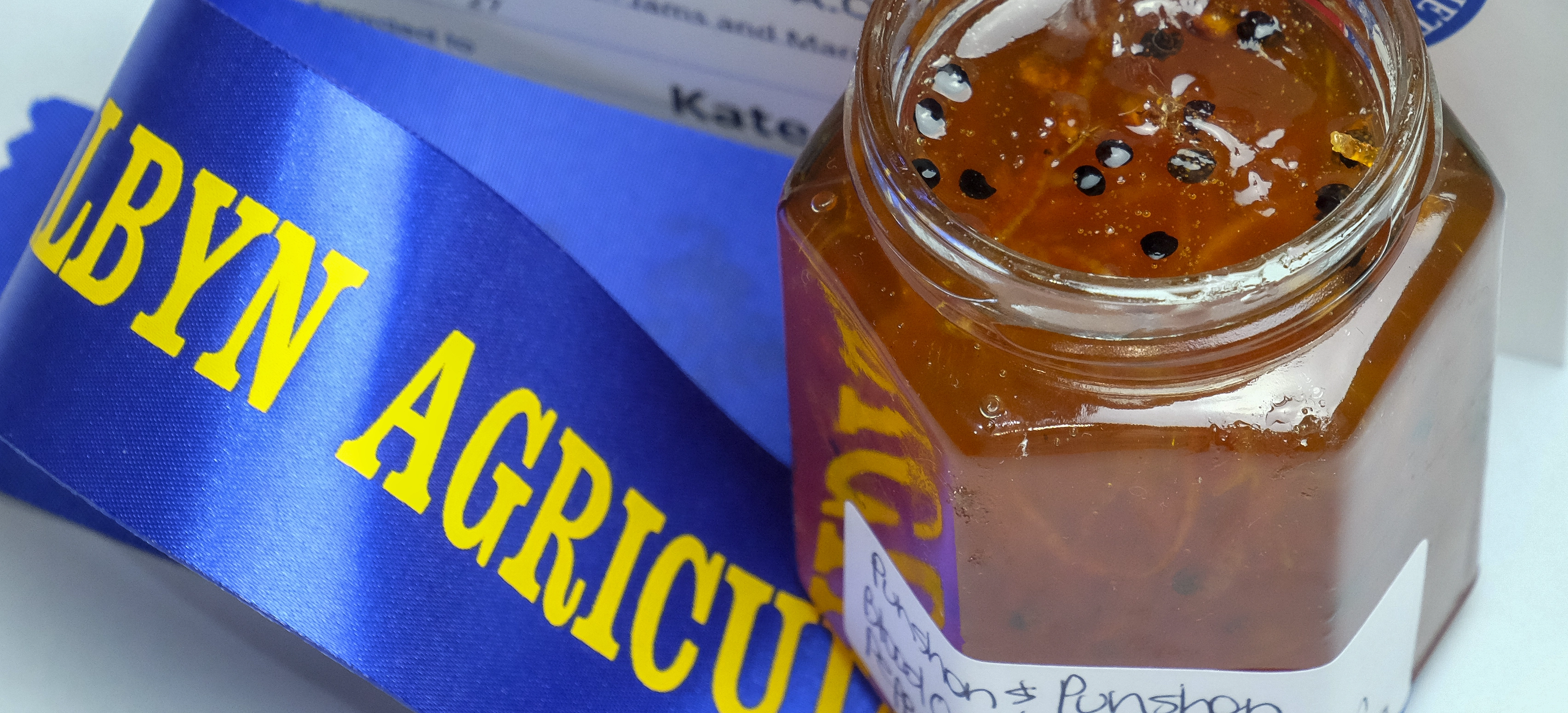Blood Orange & Sichuan Pepper Marmalade
- Jams, Jellies & Marmalades

The sweet fruity tang of blood orange combined with the spicy warmth of Sichuan pepper is a rare and bold marmalade combo. When I’m looking for something special as a treat to chase away the winter blues or as a quirky gift for a foodie friend, this is the one!
Its intense orange jelly with crimson shreds of peel and bursts of cracked peppercorns is a feast for the eyes and a gloriously colourful adornment on morning toast. Be bold, make a small batch and be bedazzled by the flavour sensation. Sichuan pepper is also known as Szechuan pepper, flower pepper and flower peppercorn. Regardless on its name, it differs from black peppercorns and has a citrusy flavour and a spiciness, that leaves a tingling hum in the mouth.
- Preparation Time:
- 30-40 minutes
- Cooking Time:
- 60 minutes
- Quantity:
- 6 x 300 ml jars
PREPARATION
Sterilise sealable glass jars and lids.

INGREDIENTS
- 1,4 kg
- Blood oranges
- 1.5 kg
- White sugar
- I litre
- Water
- 6
- Sichuan pepper,, whole, slightly cracked
METHOD
Wash the fruit skin to remove any garden debris or wax if they have been commercially grown.
To remove and shred the peel. Take a thin slice off the top and bottom of the orange. Place cut side down on a chopping board, so the orange is stable. Using a sharp knife, remove the peel by running the knife from the top to the bottom using a slightly curved motion as you follow the shape of the orange. A small piece of peel will be removed. Turn the orange and repeat the process to remove all the peel.
Now remove the pith. Place a piece of peel, skin side down on a chopping board and run a sharp knife between the peel and the pith. Remove as much of the pith as possible. Repeat the process until the pith has been removed from all the peel.
Cut peel into thin strips and put aside. This will become the peel shreds in the marmalade.
Remove orange segments from the remaining whole blood orange. Place a fine strainer over a kitchen bowl. This will catch the pips and the blood orange juice in the next step. Holding a peeled blood orange in one hand, cut out each segment of flesh between the membranes with the other. A sharp knife is essential for this step.
Once all the segments have been removed, squeeze out as much juice as possible from the membrane. Keep the juice, pips and segments separate and put aside.
Make a pectin bag with the pips, membrane shell and a small handful of pith. Refer to the Notes section below: How to Make a Pectin Bag.
Place the segments, juice, shredded peel, water and pectin bag into a preserving pan. Bring to boil over high heat then reduce to a light simmer for 10 minutes. Add the cracked Sichuan pepper and continue to simmer with the lid on until the peel is soft. Refer to the Notes section below: How to Test Peel.
Using gloves remove the pectin bag and squeeze to extract as much juice and pectin as possible. Put aside.
Add a third of the warmed sugar and stir to quickly dissolve. Repeat the process 2 more times until all the sugar is dissolved. Over high heat bring the marmalade to a boil, then boil rapidly for approximately 10 minutes. Test to see if it has reached the setting point. If not, continue to boil and keep checking every 2 minutes until it reached the set point using either the flake or wrinkle test or until it reaches 105 C/220 F.
-
Remove from the heat and place on heat resistant surface. With a stainless spoon or any spoon that has relatively fine edge, skim the top of the marmalade to remove any scum that has accumulated during the cooking process.
-
Allow to cool slightly for approximately 5-10 minutes, then stir gently to distribute the peel evenly. Using a funnel pour into dry sterilised screw cap sealable bottles or your preferred method and fill to approximately 2.5cm (1 inch) from the top of the bottle.
-
Seal, label and store in a cool dark place in the kitchen or pantry.
Allow the marmalade to mature for at least 2 weeks before enjoying.
NOTES
- Use fresh citrus that have been recently picked as the pectin content is likely to be higher. Pectin is concentrated in the seeds, pith and cores of the fruit. Don’t discard them as they are invaluable in jam and marmalade making as it is the ratio between the fruit acids, pectin and sugar that makes them set.
- To wash the fruit, I use a pair of Skrub’s vegetable gloves. These are a wonderful invention and their slightly course material magically scrubs fruit and vegetables with the greatest of ease. Easy to wash and dry they are an indispensable item in my kitchen. Special thanks to my very dear friend Sue who found them in a cookware shop. Alternatively use a small vegetable scrubbing brush.
- To make a pectin bag.
- drape clean sterilised calico or muslin cloth, approximately 200 cm square, over a bowl. Place the pith, seeds and membrane shell in the cloth. Then gather up the ends and close the bag by tying it up tightly with smooth kitchen string.
- Allow plenty of room between the contents and tie point so the citrus water can bubble through the bag and extract the pectin from the pith, seeds and membrane shell. Do not put too much pith otherwise the marmalade can take on a bitter taste. It’s now ready to use.
- Discard the fruit once the bag has been removed from the preserving pan. The cloth can be washed, dried and kept for the next batch. My tea towel draw has a range of different size cloths that are on hand for my jam and marmalade experiments.
- To warm the sugar, put the recipe quantity in an oven proof container and place in a preheated oven to 150 degrees C for approximately 10 minutes. The sugar should be warm throughout the bowl. Warmed sugar, dissolves quickly and a rapid boil until the setting point is reached helps to preserve the fresh citrus flavour.
- If you don’t have a preserving pan, use a large heavy bottom pot, preferably stainless steel. Ensure there is enough space available in the pot for the mixture to double in size while it is rapidly boiling.
- To test if the peel is cooked, squeeze a piece of peel between the thumb and finger; the peel should squeeze easily to a mush.

